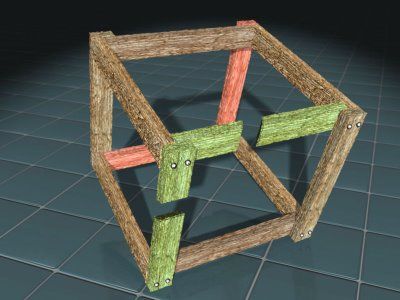|
|
Optical Illusion By Michael Kay
|
In the Ponzo illusion the converging parallel lines tell the brain that the image higher in the visual field is farther away therefore the brain perceives the image to be larger, although the two images hitting the retina are the same size. The Optical illusion seen in a diorama/false perspective also exploits assumptions based on monocular cues of depth perception. The M. C. Escher painting Waterfall exploits rules of depth and proximity and our understanding of the physical world to create an illusion.
Like depth perception, motion perception is responsible for a number of sensory illusions. Film animation is based on the illusion that the brain perceives a series of slightly varied images produced in rapid succession as a moving picture. Likewise, when we are moving, as we would be while riding in a vehicle, stable surrounding objects may appear to move. We may also perceive a large object, like an airplane, to move more slowly than smaller objects, like a car, although the larger object is actually moving faster. The Phi phenomenon is yet another example of how the brain perceives motion, which is most often created by blinking lights in close succession.
• Colour and brightness constancies
global interpretation of the surrounding image. Also, the white tiles that are shadowed are the same colour as the grey tiles outside the shadow.
|
|









